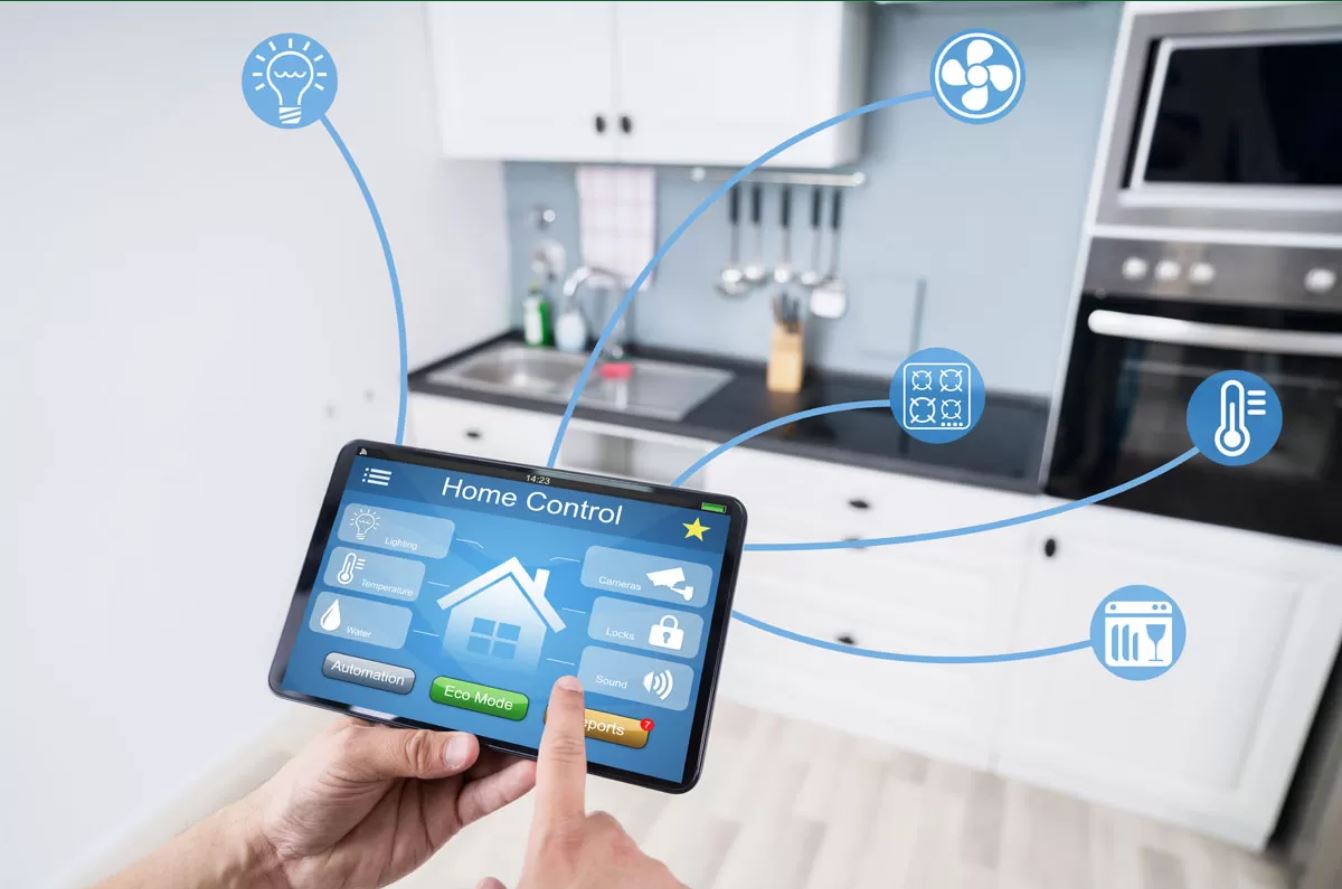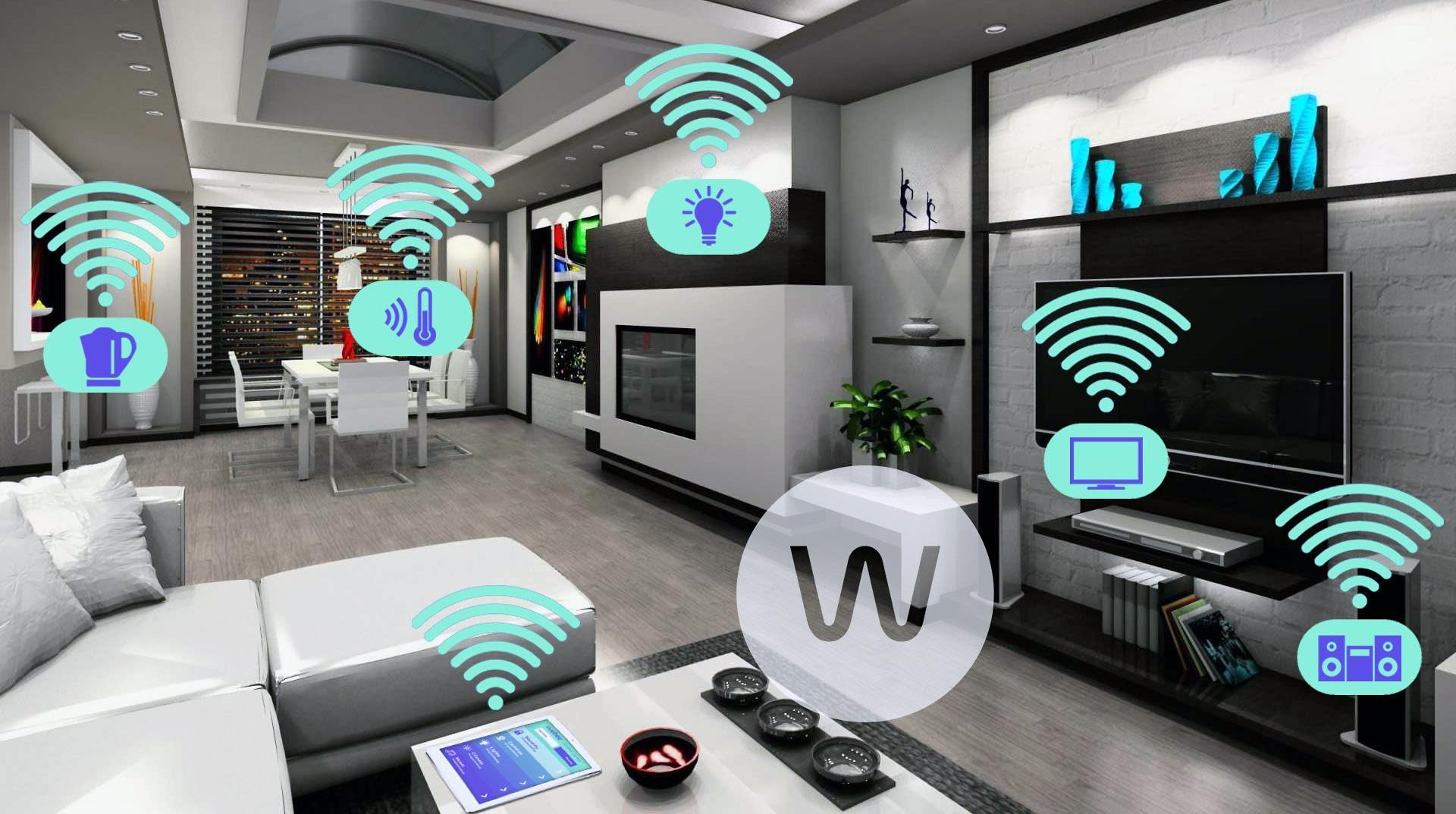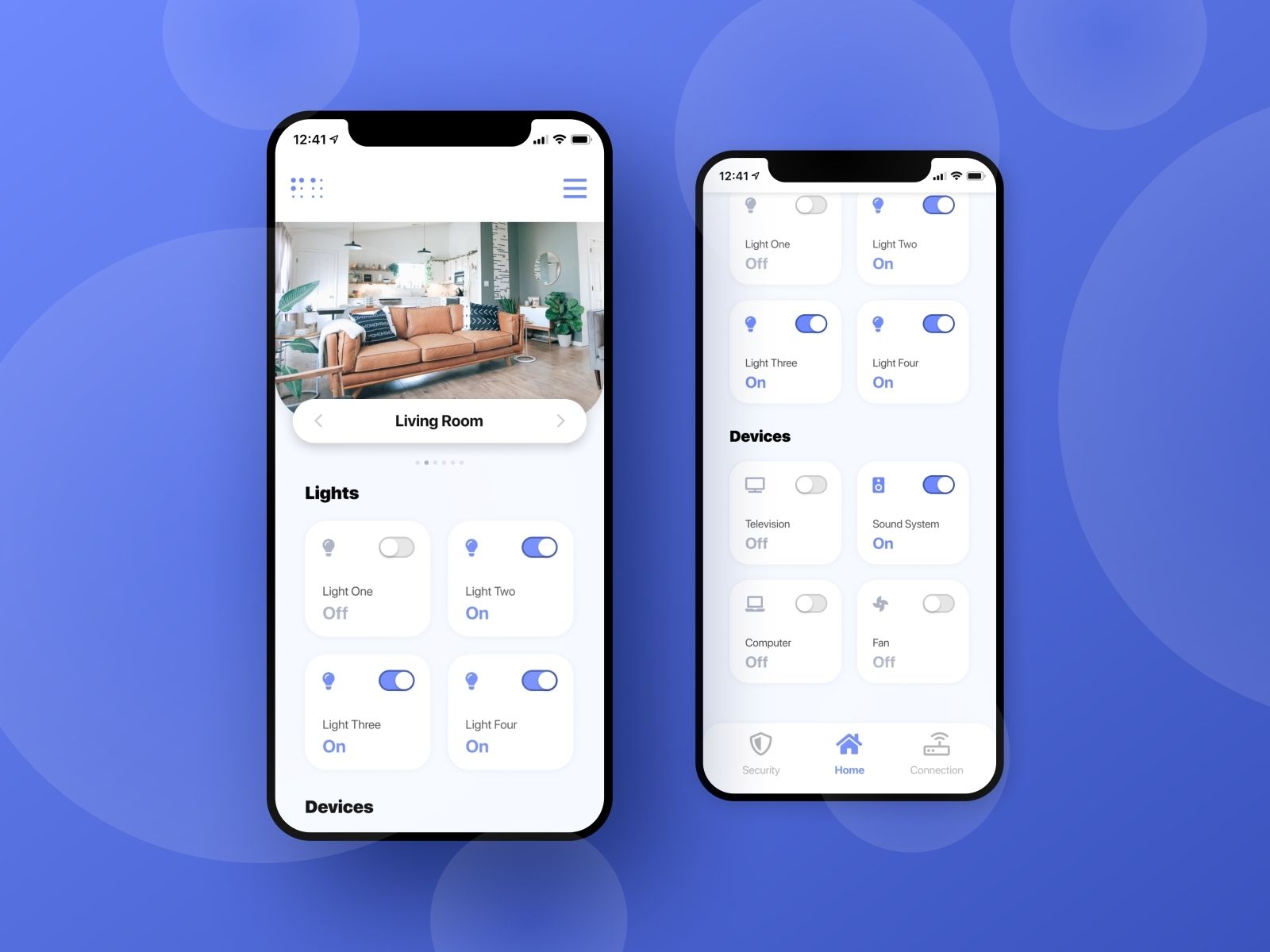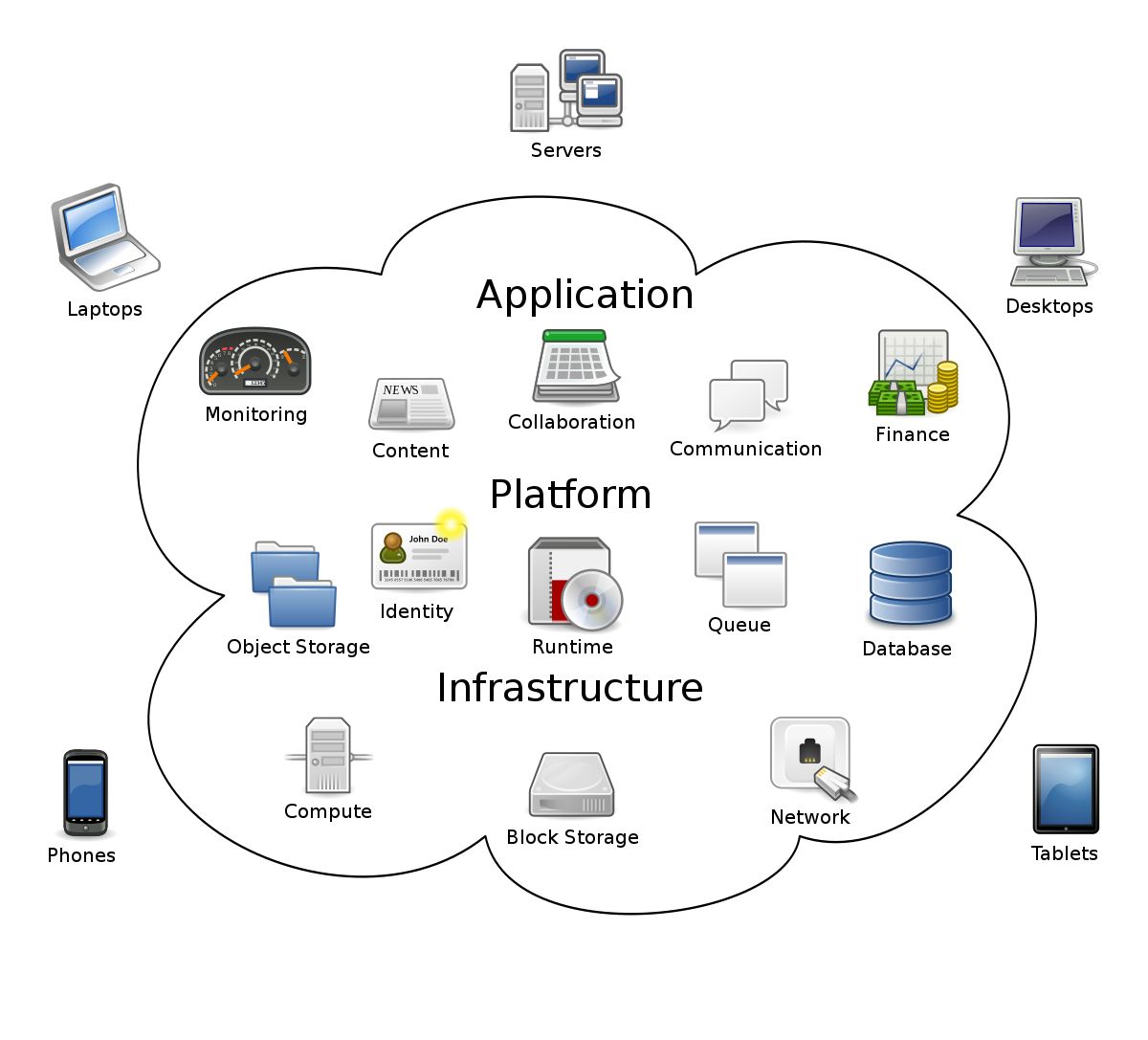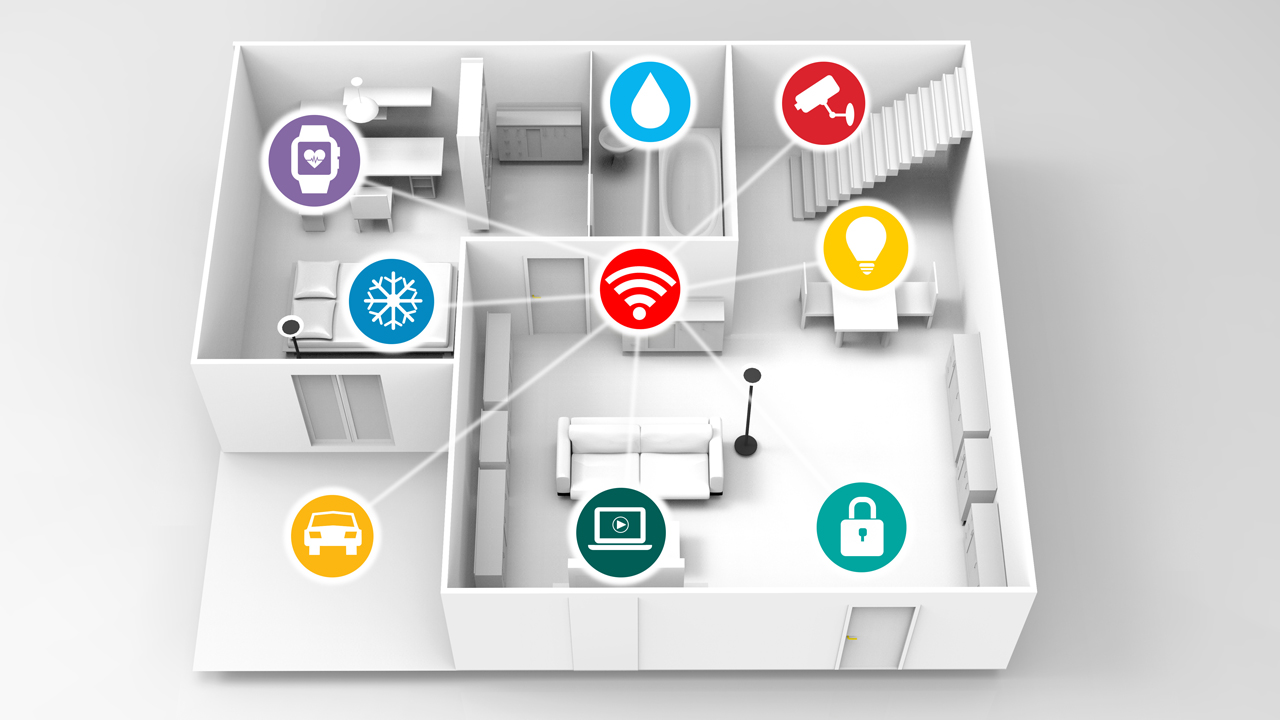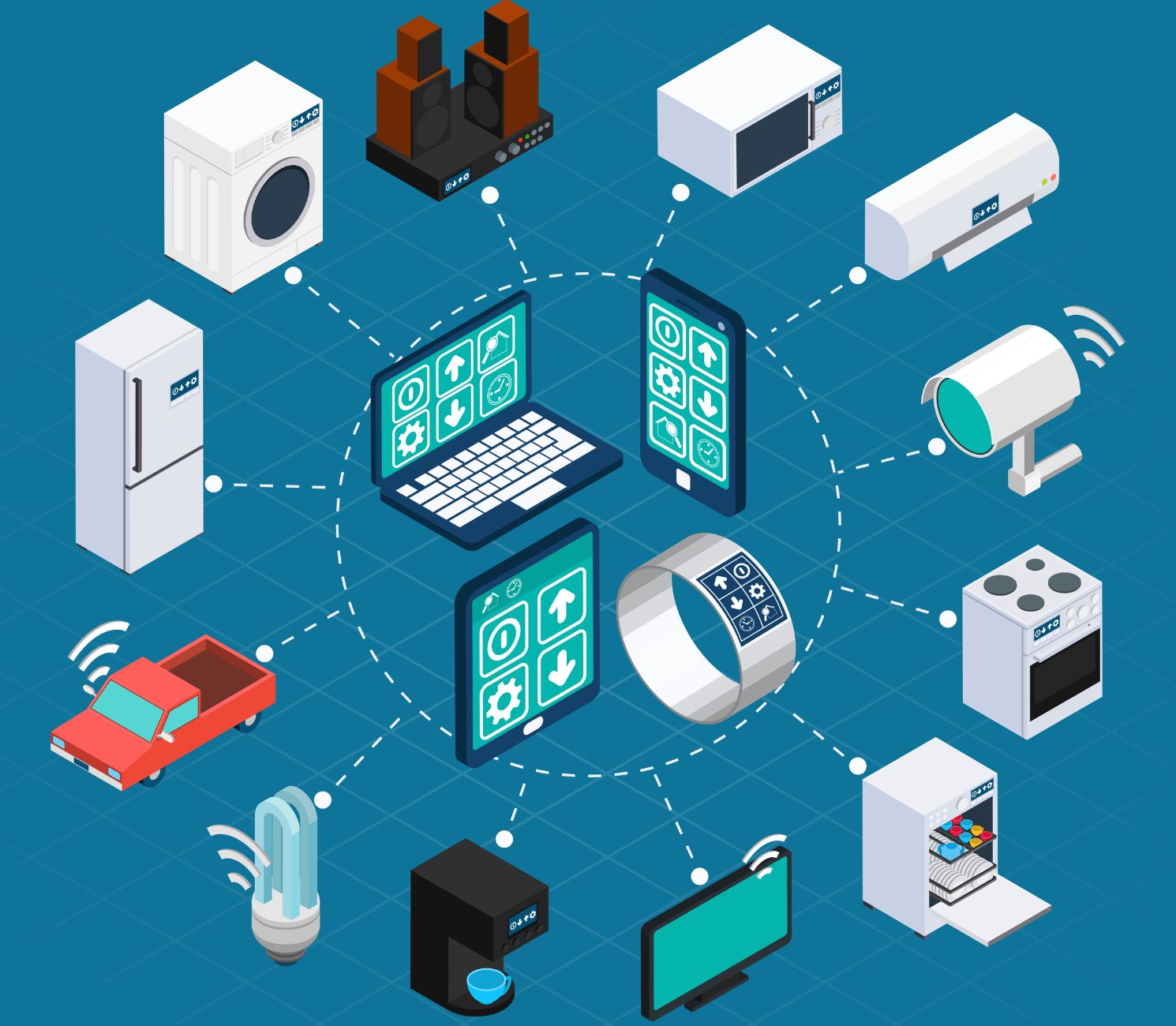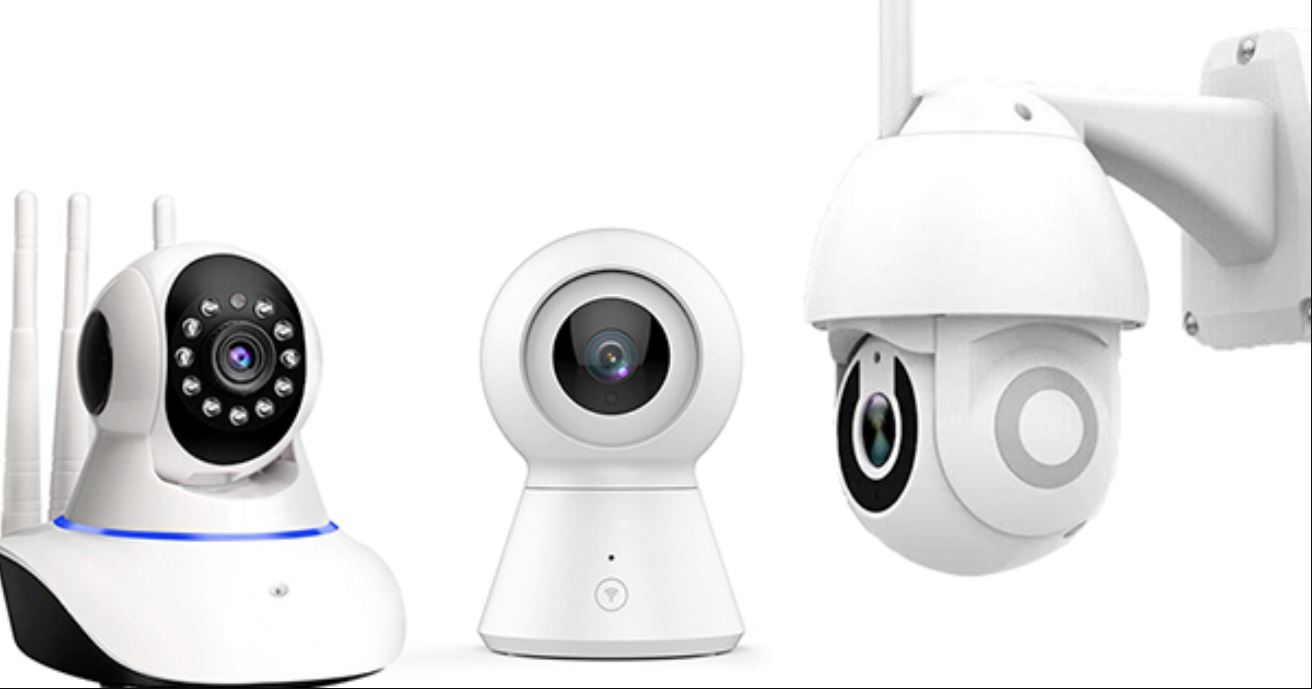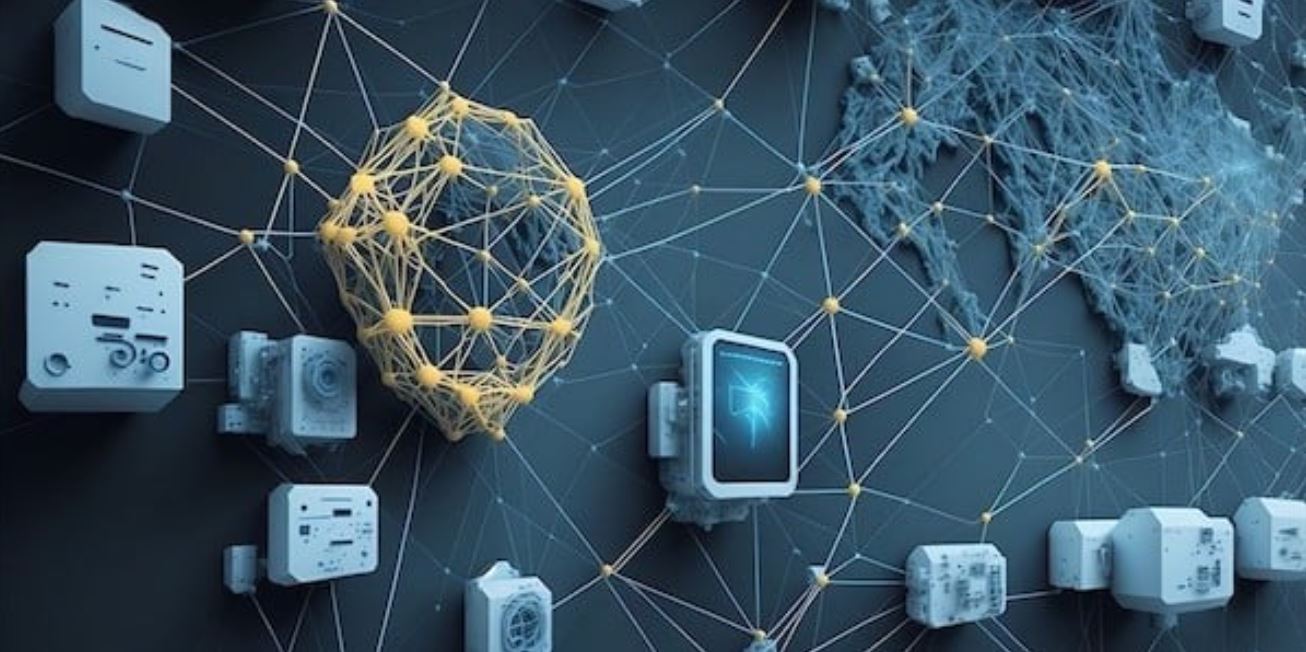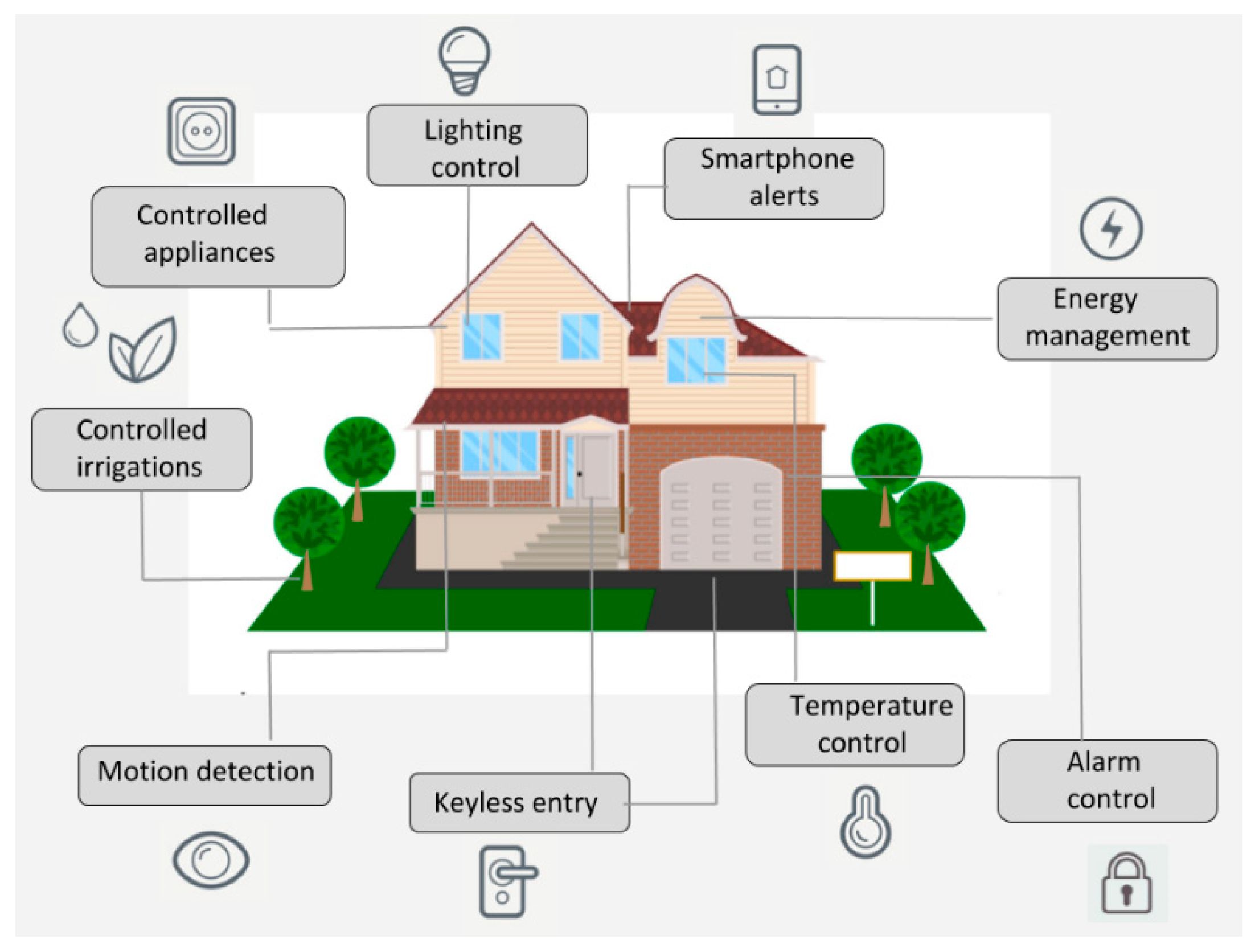Introduction
Welcome to the age of the Internet of Things (IoT), where everyday objects are connected to the internet, allowing us to interact with them in ways we never thought possible. One of the most significant advancements in IoT is the development of IoT security systems for homeowners. These systems provide a range of functionalities designed to enhance the safety and security of our homes.
IoT security systems utilize smart devices, such as sensors, cameras, and control panels, to create a network that can be accessed remotely. This network enables homeowners to monitor their homes, detect intrusions, and manage various aspects of home security and automation. With the integration of advanced technologies and sophisticated algorithms, these systems offer a myriad of benefits and features that significantly enhance home security and peace of mind.
In this article, we will explore the functionalities that an IoT security system provides to homeowners, giving you a comprehensive understanding of the advantages and features of this innovative technology. From remote monitoring to environmental sensing, let’s dive into the world of IoT security systems and discover how they can transform your home into a secure and smart sanctuary.
Remote Monitoring
One of the key functionalities of an IoT security system is remote monitoring. With the help of connected smart devices and a mobile app or web portal, homeowners can monitor their homes from anywhere at any time. This means staying updated on what’s happening in your home even when you’re not there physically.
Through the IoT security system, you can access live video feeds from surveillance cameras strategically placed around your property. This allows you to keep an eye on your home, ensuring that everything is secure and no suspicious activities are taking place. Additionally, motion sensors can be installed to detect any unauthorized movement and provide real-time alerts to your mobile device.
In addition to video surveillance, an IoT security system can also monitor environmental conditions within your home. This includes detecting changes in temperature, humidity levels, and even air quality. This functionality is particularly useful for homeowners who are concerned about potential water leaks, fire hazards, or other environmental risks. The system can send instant notifications if any abnormality is detected, enabling you to take immediate action, even if you are miles away.
Furthermore, remote monitoring functionality extends beyond just security. With an IoT security system, you can also monitor and control other aspects of your home, such as lighting, thermostats, and even appliances. This means you can remotely turn on/off lights, adjust the temperature, or even start your robotic vacuum cleaner, providing convenience and energy efficiency.
Overall, the remote monitoring feature of an IoT security system offers peace of mind to homeowners. By enabling constant surveillance, real-time alerts, and remote control, you can feel confident that your home is secure and in your control, no matter where you are. This functionality empowers homeowners to proactively address any security concerns and ensures a safer living environment for you and your loved ones.
Intrusion Detection
When it comes to home security, detecting and preventing intrusions is of utmost importance. An IoT security system excels in this area by providing advanced intrusion detection capabilities that go beyond traditional alarm systems.
IoT security systems employ a variety of sensors strategically placed throughout your home to monitor for any unauthorized entry points, such as doors, windows, or even motion-sensitive areas. These sensors can detect any disturbances or breaches in real-time, triggering immediate alerts to your mobile device or to a designated security monitoring center.
The system can be customized to fit your specific needs, allowing you to set up different security zones and specify the level of sensitivity for each area. For example, you can have tighter security measures in place for vulnerable areas like the main entrance or bedrooms, while having slightly lower sensitivity in less critical areas like the living room.
Not only does an IoT security system detect intrusions, but it also provides additional layers of security. For instance, in the event of a forced entry or suspicious activity, the system can activate loud alarms and even integrate with smart door locks to automatically lock or unlock doors. This not only helps in deterring intruders but also keeps you informed about any security breaches happening in real-time.
Moreover, some IoT security systems can utilize machine learning algorithms to analyze patterns and behaviors to differentiate between normal activity and potential threats. This allows the system to become more intelligent over time, adapting to your daily routines and flagging any anomalies that could indicate a security breach.
Overall, the intrusion detection functionality of an IoT security system provides homeowners with a proactive approach to home security. By leveraging advanced sensors, real-time alerts, and intelligent analysis, you can have peace of mind knowing that your home is protected from any potential intrusions or security breaches.
Video Surveillance
Video surveillance is a crucial component of an IoT security system that offers homeowners an extra layer of protection and peace of mind. With strategically placed cameras inside and outside your home, you can keep a watchful eye on your property and deter potential intruders.
One of the significant advantages of video surveillance in an IoT security system is the ability to access live video feeds from anywhere using your smartphone, tablet, or computer. This allows you to monitor your home in real-time and view recorded footage as needed. Whether you are at work, on vacation, or simply away from home, you can stay connected to your property and ensure its safety.
The presence of surveillance cameras alone acts as a strong deterrent to potential intruders. The knowledge that their actions are being recorded significantly reduces the risk of your home becoming a target. In case of a break-in or suspicious activity, the recorded footage serves as invaluable evidence that can assist law enforcement in apprehending the culprits or help during insurance claims.
Additionally, the integration of smart analytics in IoT security systems enhances the capabilities of video surveillance. AI-powered algorithms can detect unusual activities or behaviors, such as loitering, motion in restricted areas, or even facial recognition. This allows the system to automatically trigger alerts or take specific actions, increasing the effectiveness of the overall security infrastructure.
Moreover, video surveillance can also be utilized for non-security purposes within your home. For instance, you can keep an eye on children or elderly family members, ensuring their safety and well-being. You can also use the camera feeds to monitor your pets or check on deliveries while you’re away.
Overall, video surveillance is an invaluable component of an IoT security system that provides homeowners with real-time monitoring, deterrence, and evidence gathering. By having eyes on your property at all times, you can effectively protect your home and loved ones, giving you the peace of mind you deserve.
Access Control
Access control is a critical functionality offered by IoT security systems, allowing homeowners to regulate and manage who can enter their property or specific areas within their home. This feature provides an additional layer of security and control over who has access to your property.
Traditional lock and key systems can be easily bypassed or lost, compromising the security of your home. IoT security systems, on the other hand, offer more sophisticated and convenient access control options. These may include keyless entry systems such as smart locks or access cards that utilize NFC (Near Field Communication) or Bluetooth technology.
With IoT-powered access control, you can easily grant or revoke access to your home remotely. This is particularly useful when you have guests or service providers who need temporary access. Instead of providing them with physical keys, you can grant them access digitally through a mobile app or web portal. Once their visit is over, you can simply deactivate their access privileges. This eliminates the risk of unauthorized entry and increases the overall security of your home.
Furthermore, IoT security systems allow for granular control over access privileges. You can create user profiles and assign different levels of access to different individuals. For example, you can give full access to family members and limited access to visitors or housekeepers, ensuring that everyone has appropriate access while minimizing any potential security risks.
What’s more, access control functionality can be integrated with video surveillance systems. This means that every time someone enters your property or specific areas within your home, it can be recorded and logged. This provides an added layer of security and accountability, as you have a record of who accessed your property at any given time.
In summary, access control in an IoT security system offers homeowners the ability to regulate and manage who enters their property. With advanced keyless entry options and the ability to grant or revoke access remotely, homeowners can have greater control over the security of their homes. This functionality enhances convenience, minimizes security risks, and provides an added layer of protection for you and your loved ones.
Energy Management
In addition to enhancing home security, IoT security systems also provide homeowners with energy management capabilities, helping them to create a more efficient and sustainable living environment. By integrating smart home technology, these systems enable users to monitor and control their energy consumption, resulting in cost savings and reduced environmental impact.
One of the key features of energy management in an IoT security system is the ability to monitor and regulate your home’s energy usage in real-time. Smart meters and sensors can track your electricity, water, and gas consumption, providing you with detailed insights into where energy is being consumed the most. This information allows you to identify inefficiencies and make informed decisions to reduce energy waste.
With remote access to your IoT security system, you can control and automate various energy-consuming devices and systems in your home. For example, you can schedule your thermostat to adjust temperature settings based on your daily routine or weather conditions. You can also remotely turn off lights, appliances, or equipment that may have been accidentally left on, reducing unnecessary energy consumption.
Moreover, an IoT security system can provide energy usage alerts and notifications to help you stay on top of your energy consumption. For instance, if your energy usage suddenly spikes, indicating a potential issue or malfunction, the system can send you an alert, allowing you to address the problem promptly and avoid unnecessary expenses.
Additionally, some IoT security systems can integrate with renewable energy sources, such as solar panels or wind turbines, to further optimize energy management. These systems can intelligently switch between grid power and renewable energy sources to ensure that you are utilizing clean energy and maximizing your savings.
By incorporating energy management into IoT security systems, homeowners can not only reduce their energy bills but also contribute to a greener planet. Monitoring and controlling energy consumption, automating energy-consuming devices, and integrating renewable energy sources all work together to create a more sustainable living environment for you and future generations.
Fire and Smoke Detection
Fire and smoke detection is a crucial functionality provided by IoT security systems, helping homeowners protect their properties and loved ones from the devastating effects of fire. These systems utilize advanced sensors and detectors to detect the presence of smoke or high temperatures, enabling early detection and rapid response to potential fire hazards.
The IoT security system’s fire and smoke detectors are strategically placed throughout your home, including areas with a higher risk of fire, such as the kitchen, garage, and utility rooms. These detectors constantly monitor the environment for any signs of smoke or sudden changes in temperature.
When an abnormality is detected, the IoT security system immediately alerts you and sounds an alarm, providing ample time to evacuate and take necessary actions. In addition to audible alerts, the system can also send notifications to your mobile device, allowing you to respond even if you’re away from home.
One of the significant advantages of IoT-powered fire and smoke detection is the ability to integrate with other smart devices for enhanced safety measures. For example, the system can automatically trigger the sprinkler system, close air vents to prevent the spread of smoke, or even unlock doors to allow for easy evacuation in case of a fire emergency.
Furthermore, the integration of artificial intelligence and machine learning algorithms enables the system to learn and recognize different patterns and behaviors associated with fire and smoke. This helps to minimize false alarms, ensuring that alerts are only triggered when there is a genuine threat.
Fire and smoke detection functionality in an IoT security system provide homeowners with peace of mind, knowing they have an advanced early warning system in place. The ability to receive real-time alerts, integrate with other safety devices, and minimize false alarms ensures the safety of your property and loved ones, helping to mitigate the devastating effects of fire.
Water Leak Detection
Water damage can be one of the most costly and damaging issues homeowners face. Fortunately, IoT security systems offer water leak detection functionality to help prevent and mitigate the risks associated with water leaks and flooding.
IoT security systems employ sensors and detectors that can detect water leaks and abnormal levels of moisture in different areas of your home. These sensors are typically placed in areas prone to water damage, such as bathrooms, kitchens, basements, or near appliances like washing machines and water heaters.
When a leak is detected, the IoT security system sends an immediate alert to your mobile device, allowing you to take swift action. This gives you the opportunity to address the issue before it escalates, potentially saving you from expensive repairs and extensive damage to your property.
In addition to detecting leaks, some IoT security systems go a step further by shutting off the water supply automatically when a leak is detected. This feature can be a lifesaver, as it can prevent significant water damage and minimize the impact of a leak until it can be fixed.
Furthermore, water leak detection functionality can also help you monitor your water usage and detect any anomalies or spikes that may indicate a leak or inefficient usage. This allows you to take corrective measures and reduce water waste, contributing to both cost savings and water conservation efforts.
By integrating water leak detection into your IoT security system, you gain a proactive approach to mitigate the risks associated with water damage. Real-time alerts, automatic water shutoff, and the ability to monitor water usage help safeguard your property, reduce the potential for costly repairs, and provide you with peace of mind knowing that your home is protected from water-related disasters.
Environmental Monitoring
An important functionality provided by IoT security systems is environmental monitoring, which allows homeowners to maintain a safe and healthy living environment. With the integration of smart sensors and detectors, these systems can monitor various environmental factors and alert homeowners to potential hazards or issues.
One of the key aspects of environmental monitoring is the detection of changes in temperature and humidity levels. Fluctuations in temperature and humidity can lead to discomfort, mold growth, or even damage to sensitive items. IoT security systems equipped with environmental sensors can continuously monitor these factors and notify you if conditions deviate from the desired range.
Furthermore, some IoT security systems can detect the presence of harmful gases, such as carbon monoxide and volatile organic compounds (VOCs). These gases can be invisible and odorless, posing serious health risks. By having sensors that can detect these gases, homeowners can receive immediate alerts and take appropriate measures to mitigate any potential dangers.
Additionally, environmental monitoring can extend to air quality. IoT security systems equipped with air quality sensors can detect pollutants in the air, such as particulate matter and allergens. This information allows homeowners to take steps to improve indoor air quality, whether it’s through filtration systems, adjusting ventilation, or addressing potential sources of pollutants.
Moreover, some IoT security systems can monitor the levels of radiation and electromagnetic fields (EMF) within your home. This is particularly useful for homeowners who are concerned about potential health risks associated with high radiation or EMF levels. Early detection allows for necessary adjustments or interventions to minimize exposure.
By providing comprehensive environmental monitoring, IoT security systems empower homeowners to create a safe and healthy living environment. Real-time alerts and continuous monitoring of temperature, humidity, gases, air quality, and radiation levels enable proactive measures to be taken, ensuring the well-being of your loved ones. With the ability to address potential environmental hazards promptly, you can rest assured that your home is a safe haven for you and your family.
Health Monitoring
In addition to enhancing home security, IoT security systems also offer health monitoring functionalities that can help homeowners track and manage their well-being. By integrating smart devices and sensors, these systems can provide valuable insights into various health aspects, enabling individuals to make informed decisions about their lifestyle and overall health.
One of the primary health monitoring functionalities provided by IoT security systems is activity tracking. Through wearable devices such as smartwatches or fitness bands, these systems can monitor metrics like step count, heart rate, and sleep patterns. This data can provide valuable information about daily activity levels and sleep quality, empowering individuals to make adjustments to improve their overall health and well-being.
Moreover, some IoT security systems can integrate with medical devices and sensors to monitor specific health conditions or vital signs. For example, individuals with chronic conditions such as diabetes or hypertension can use connected devices to track their blood glucose levels or blood pressure. This data can be easily shared with healthcare providers and used to identify trends, make adjustments to treatment plans, or trigger alerts if readings fall outside the desired range.
Additionally, the integration of smart scales and body composition analyzers in IoT security systems allows individuals to track their weight, body fat percentage, muscle mass, and other relevant metrics. This information can be vital for those who are trying to manage their weight or make progress in their fitness journey. Having access to these measurements in real-time can motivate individuals to stay on track and make necessary adjustments.
Furthermore, some IoT security systems offer medication reminders and adherence tracking functionalities. This can be particularly beneficial for individuals who need to take multiple medications or have complex medication schedules. By assisting with timely reminders and providing a record of medication adherence, these systems can help improve medication management and overall health outcomes.
By incorporating health monitoring into IoT security systems, homeowners can have a holistic approach to their well-being. From activity tracking to vital sign monitoring and medication management, these functionalities enable individuals to take charge of their health and make proactive decisions to improve their quality of life. With real-time data, personalized insights, and easy integration with healthcare providers, IoT security systems are becoming an essential tool for individuals to monitor and manage their health effectively.
Conclusion
In today’s connected world, IoT security systems offer homeowners a wide range of functionalities that enhance home security and provide numerous benefits beyond traditional alarm systems. From remote monitoring and intrusion detection to video surveillance, access control, energy management, fire and smoke detection, water leak detection, environmental monitoring, and health monitoring, these systems have revolutionized the way we protect and manage our homes.
By leveraging advanced technologies, such as smart sensors, cameras, and artificial intelligence, IoT security systems provide homeowners with real-time monitoring, instant alerts, and remote control capabilities. This enables homeowners to keep a watchful eye on their property, detect and respond to potential security breaches, regulate access, manage energy consumption, mitigate the risks of fire and water damage, monitor environmental conditions, and even track their own health and well-being.
The integration of these functionalities in a single IoT security system creates a comprehensive and interconnected network that enhances safety, convenience, and peace of mind for homeowners. With the ability to monitor and control their homes remotely, homeowners can be confident in the security of their property and the well-being of their loved ones.
It is important to note that while IoT security systems offer numerous benefits, it is crucial to ensure the proper installation, configuration, and maintenance to maximize their effectiveness. Regular updates, strong passwords, and adherence to cybersecurity best practices are essential to safeguarding these systems against potential threats.
As technology continues to advance, so will the capabilities of IoT security systems. Homeowners can expect even more sophisticated functionalities and integration with emerging technologies to further enhance home security and management. The future of home security lies in the hands of IoT, providing homeowners with unprecedented control, convenience, and peace of mind in protecting their most valuable asset – their home.







